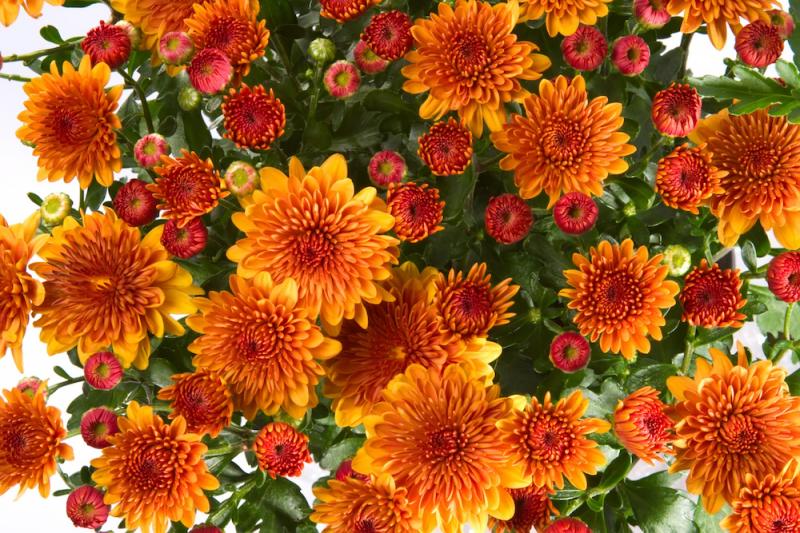- November 2, 2021
The Amazing Health and Medicinal Benefits of Apples
If you've heard the saying “An apple a day keeps the doctor away,” and wondered if there is any truth to this statement, so have I. To find out I did some research to see if there is any evidence to back this idea up. I found that eating apples can help you balance your blood sugar and lose weight and so much more.
- October 26, 2021
The Medicinal Benefits of Chrysanthemum
During the fall most plants start to wind down, their leaves change color and dry out as winter nears. But a few plants have decided that this is the time of year to blossom, giving us some final splashes of color for autumn. One of these is chrysanthemums, which start to bloom in late summer and early fall. There are numerous species of these plants, which belong to the Asteraceae family, formerly known as Compositae, because the flowers are actually a group of flowers blooming in a head. Many…
- October 22, 2021
The Gall Bladder Flush
Many people have claimed to have eliminated gallstones by doing a gallbladder flush. Although there is controversy surrounding this therapy, I’ve seen it help many people with gall bladder problems. Here’s how it is done.Start by fasting for 24 to 48 hours on fresh, raw apple juice or freshly squeezed grapefruit juice to clear the colon. Malic acid, an ingredient in apple juice, also soften the stones, but persons with hypoglycemia or yeast infections will do better on grapefruit juice. If using…
- October 19, 2021
Burdock
Autumn is the best time of the year to harvest most herbal roots, especially biennials like burdock. A biennial is a plant that lives for two years. During the first year, it produces only leaves and gathers energy and nutrients in the root. During the second year, it produces flowers, fruits, and seeds, using up the stored energy and nutrients of the root. Examples of biennials include carrots, beets, turnips, mullein, and burdock. The first-year burdock plant produces a ring of leaves growing…
- October 12, 2021
The Uplifting Effects of Damiana
I learned a lot about herbs when I was working with a friend to formulate glycerin-based herbal products. While creating them we would routinely taste the formulas to see if we got them right. Tasting the formulas gave me the opportunity to experience the effects of various herbs and blends of herbs firsthand. I clearly remember tasting our newly-made damiana aphrodisiac formula because I felt such a surprising lift when I tried it. It was an instant boost to both my mood and energy, not unlike…
- October 5, 2021
Datura
One of the things I enjoy about where I live is how close it is to Zion National Park. I've enjoyed hiking there pretty much every year since I moved here in 2000. One time I was heading back down the River Walk trail in the evening. It was dark, and the air was filled with an intoxicating aroma. It took me awhile to figure out that I was smelling the aroma from hundreds of datura flowers that had opened up in the cool night air. Datura stramonium or D. writghtii, also known as Jimson weed or thornapple…
- September 28, 2021
AIDS, Answers and New Jersey Tea
Back in the late 1980s I had the opportunity to work with a young man who needed help. He came to me because he had AIDS and although I had read some books about treating AIDS holistically, it was a relatively new disease and I had no practical experience with it. Despite this I believed I could help him. So I shared with him what I had learned but I could tell that he wasn't hearing me. He seemed defeated and hopeless. So I took a moment to pray for guidance which inspired me to ask him, “Is…
- September 21, 2021
Ashwagandha
Ashwagandha is an herb that has genuine restorative effect. It’s been used in India in Ayurvedic medicine for over 3,000 years. In the West, ashwagandha is becoming increasingly popular as an adaptogen and a tonic. However, unlike stimulating adaptogens like ginseng, eleuthero, and schizandra, ashwagandha is a relaxing, nourishing adaptogen. Ashwagandha is a calming nerve tonic, neuroprotector and thyroid remedy, immune modulator, anti-inflammatory, and aphrodisiac.













